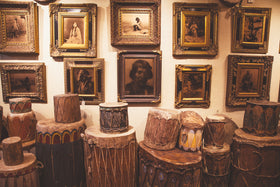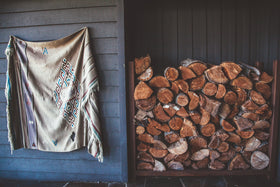Native American Folk Art and Whimsies


It is unknown exactly when the Iroquois began beading. In one account recorded in 1852, Tereesa Pulscky was visiting the Tuscarora Reservation near Niagara Falls and wrote that they “visited the home of a man of note…his daughter-in-law was diligently embroidering pincushions.” Describing the bead work they purchased, Pulscky said it was “tastefully wrought. The same pattern is never repeated; the ornaments are conceived and executed with the richness of imagination which our manufacturers lack. They are the children of the Great Spirit, the flowers, birds and the trees speak a language which is transcribed in the charming figures that are more pleasing to our eye than artificial invention.”

In another account by Welch, the sale of Indian beadwork was in full swing by 1850. One early pincushion has the following inscription on the back: “bought at the Bath House on Bath Island Falls, Niagara September 28, 1850.” By 1860, the Iroquois were making much larger pincushions and many were beaded almost exclusively with either white or crystal beads or a combination of the two on bright red wool. In 1859, Florence Hartley wrote that “the beadwork of the North American Indians is among the most beautiful. Canadian Indian women sell large quantities to visitors to the Falls at Niagara and a great deal finds its way to our large cities. It is of every imaginable form...”
These beaded items were called whimsies. In most cases, they were non-utilitarian or decorative. It was originally thought that these pieces were all made in the Northeast by the Iroquois, however more recent information shows that some were made by the Plains tribes such as the Sioux. The Iroquois furnished kits complete with beads and patterns which were shipped West for production.

Pawnee Bill was the connection between the Plains Indians and the tourist shops that sold the whimsies. He was well known among the different tribes and operated a trading post in Oklahoma, as well as a Wild West Show similar to Buffalo Bill’s.

Slogans, dates and names of tourist destinations were often stitched onto the whimsies. Some pieces of beadwork had the name of the object stitched on them, such as “box” or “boat.” Due to the production period being between the 1850s-1930s, these whimsies have become very collectible. There are significant differences in value with the highest being the more unusual and intricately designed, as well as those in exceptional condition.
Cisco's Gallery has a large number of beaded whimsies for sale. Click here to view our complete collection.




